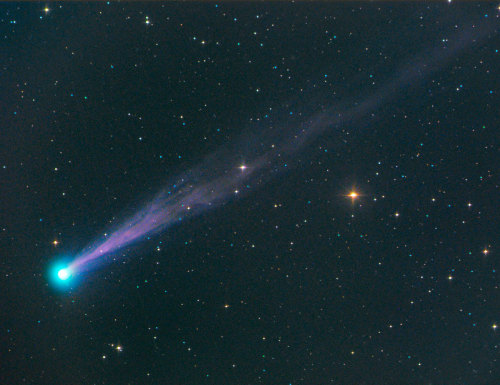Update On The Life Of A Star, Chapter 7
Update on The Life of a Star, Chapter 7
So I’m a little over halfway done (I should be ready for some editing on Saturday) with this chapter and I think this might be my one longest yet! My current longest is Chapter 6, with 1,245 words. I’m currently at around 700 words with this one, and I’ve got at least 400 more to go. Anyway, I’m really excited for this one. We’ll be touching on nebulae again, and finally addressing our first ending for a star.
We’ve only got three more chapters left, plus a possible one for additional topics. I’ll be sad to end this one, but I’m starting to gather ideas for the next book. Maybe on the methods of observing the universe? Maybe on random astrophysics topics? Perhaps one on galaxies? Cosmology? The Four Fundamental Forces? Haven’t decided yet xD
I think you’ll all really like these last chapters I have planned, or at least I hope you do. Thanks for reading :)
WANT MORE? GET YOUR HEAD STUCK IN THE STARS AT MY BLOG!
More Posts from Acosmicgeek and Others
Escape velocity!!!!!!!
I.e. the velocity that an object must attain before being able to resist an object’s gravitational pull and escape it’s influence.

Please get this.
Omg ;D
I love that so much.
Now I really want Magical Girls who represent each stage in a star’s life. Where’s my Magical Girl Neutron Star!?
WANT MORE? GET YOUR HEAD STUCK IN THE STARS AT MY BLOG!





concept: team of magical girls who each study a different branch of chemistry at university and their magical powers are based on their branch of study. watch out for physchem, she can do weird quantum shit
They’re so lonely :(
Wait I guess that means I’m an electron since I’m #foreveralone. I feel like I should be sad about this but electrons are cool so I can’t really be lol.
WANT MORE? GET YOUR HEAD STUCK IN THE STARS AT MY BLOG!

Poor electrons
I love supermassive black holes!!!
Expect this in the chapter about black holes lol
The relationship between SBHs and their host galaxies are so cool!
WANT MORE? GET YOUR HEAD STUCK IN THE STARS AT MY BLOG!




AAS NOVA
A Young Population of Hidden Jets
By Susanna Kohler
Looking for a fireworks show this 4th of July? Try checking out the distant universe, where powerful jets flung from supermassive black holes slam into their surroundings, lighting up the sky.
Though these jets are hidden behind shrouds of gas and dust, a new study has now revealed some of these young powerhouses.
A Galaxy–Black-Hole Connection
In the turbulent centers of active galaxies (active galactic nuclei, or AGN), gas and dust rains onto supermassive black holes of millions to billions of solar masses, triggering dramatic jets that plow into the surrounding matter and light up across the electromagnetic spectrum.
The growth of a supermassive black hole is thought to be closely tied to the evolution of its host galaxy, and feedback like these jets may provide that link. As the jets collide with the gas and dust surrounding the galaxy’s nucleus, they can trigger a range of effects — from shock waves that drive star formation, to gas removal that quenches star formation.
To better understand the connections between supermassive black holes and their host galaxies, we’d especially like to observe AGN at a time known as Cosmic Noon. This period occurred around 10 billion years ago and marks a time when star formation and supermassive black hole growth was at its strongest.
The Hidden World of Cosmic Noon
But there’s a catch: around Cosmic Noon, galaxies were heavily shrouded in thick gas and dust. This obscuring material makes it difficult for us to observe these systems in short wavelengths like optical and X-ray. Instead, we have to get creative by searching for our targets at other wavelengths.
Since AGN emission is absorbed by the surrounding dust and re-radiated in infrared, we can use infrared brightness to find obscured but luminous sources. To differentiate between hidden clumps of star formation and hidden AGN, we also look for a compact radio source — a signature that points to a jet emitted from a central black hole.
A team of scientists led by Pallavi Patil (University of Virginia and the National Radio Astronomy Observatory) has now gone on the hunt for these hidden sources at Cosmic Noon.
Newly-Triggered Jets Caught in the Act
Patil and collaborators observed a sample of 155 infrared-selected sources, following up with high-resolution imaging from the Jansky Very Large Array to identify compact radio sources. From their observations and modeling of the jets, the authors estimate these sources’ properties.
The authors find bright luminosities, small sizes, and high jet pressures — all of which suggest that we’ve caught newly-triggered jets in a short-lived, unique phase of AGN evolution where the jets are still embedded in the dense gas reservoirs of their hosts. The jets are expanding slowly because they have to work hard to push through the thick clouds of surrounding material. Over time, the jets will likely expand to larger scales and clear out the surrounding matter, causing the sources to evolve into more classical looking radio galaxies.
What’s next? The authors are currently working on a companion study to further explore the shapes of the jets and their immediate environments. These young, hidden sources will provide valuable insight into how supermassive black holes evolve alongside their host galaxies.
Citation “High-resolution VLA Imaging of Obscured Quasars: Young Radio Jets Caught in a Dense ISM,” Pallavi Patil et al 2020 ApJ 896 18. doi:10.3847/1538-4357/ab9011
TOP IMAGE….Artist’s impression of a galaxy forming stars, as powerful jets that are flung from its central black hole collide with the surrounding matter. [ESO/M. Kornmesser]
CENTRE IMAGE….This composite image of Centaurus A shows an example of large-scale jets launched from an AGN, which can eventually extend far beyond the galaxy, as seen here. [ESO/WFI (Optical); MPIfR/ESO/APEX/A.Weiss et al. (Submillimetre); NASA/CXC/CfA/R.Kraft et al. (X-ray)]
LOWER IMAGE….The redshift distribution of the authors’ sample, based on spectroscopic redshifts of 71 sources. The sources span the period of peak star formation and black hole fueling around Cosmic Noon. [Patil et al. 2020]
BOTTOM IMAGE….The JVLA 10 GHz radio continuum observations for four sources in the authors’ sample. The cyan plus symbol marks the infrared-obtained source position. The color bars indicate flux in mJy/beam. [Adapted from Patil et al. 2020]
Wow, Mars is one of the closest planets to us xD
Just shows you how massive space really is
(Maybe even infinitely so)
WANT MORE? GET YOUR HEAD STUCK IN THE STARS AT MY BLOG!

This is what the Earth looks like from the surface of our red neighbour, Mars!
Happy Earth day everyone 🌎🌍🌏 Hope you’re all staying safe!!
Image Credit: NASA’s Curiosity Mars Rover
More nebulae!!!
WANT MORE? GET YOUR HEAD STUCK IN THE STARS AT MY BLOG!

M27: Not a Comet : While hunting for comets in the skies above 18th century France, astronomer Charles Messier diligently kept a list of the things he encountered that were definitely not comets. This is number 27 on his now famous not-a-comet list. In fact, 21st century astronomers would identify it as a planetary nebula, but it’s not a planet either, even though it may appear round and planet-like in a small telescope. Messier 27 (M27) is an excellent example of a gaseous emission nebula created as a sun-like star runs out of nuclear fuel in its core. The nebula forms as the star’s outer layers are expelled into space, with a visible glow generated by atoms excited by the dying star’s intense but invisible ultraviolet light. Known by the popular name of the Dumbbell Nebula, the beautifully symmetric interstellar gas cloud is over 2.5 light-years across and about 1,200 light-years away in the constellation Vulpecula. This impressive color composite highlights details within the well-studied central region and fainter, seldom imaged features in the nebula’s outer halo. It incorporates broad and narrowband images recorded using filters sensitive to emission from hydrogen and oxygen atoms. via NASA
Only two things are infinite, the universe and human stupidity, and I'm not sure about the former.
Albert Einstein
WANT MORE? GET YOUR HEAD STUCK IN THE STARS AT MY BLOG!
It surprises me how disinterested we are today about things like physics, space, the universe and philosophy of our existence, our purpose, our final destination. Its a crazy world out there. Be curious.
Stephen Hawking
WANT MORE? GET YOUR HEAD STUCK IN THE STARS AT MY BLOG!

... why.
There are no aliens - so the only thing we could use this as is like a nuke - but that would destroy the entire Earth xD
WANT MORE? GET YOUR HEAD STUCK IN THE STARS AT MY BLOG!
-
 coffee-sunflower liked this · 4 years ago
coffee-sunflower liked this · 4 years ago -
 acosmicgeek reblogged this · 4 years ago
acosmicgeek reblogged this · 4 years ago

